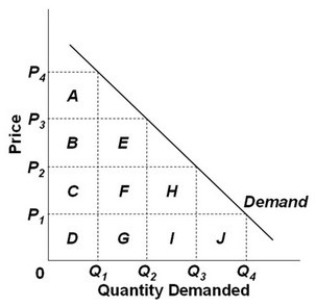Multiple Choice

- Refer to the graph above and assume that the areas of the boxes are the same. Consider a situation where price decreases from P2 to P1. In this price range, demand is relatively:
A) inelastic because the loss in total revenue (areas D + G + I + J) is greater than the gain in total revenue (areas C + F + H) .
B) elastic because the loss in total revenue (areas C + F + H) is greater than the gain in total revenue (area J) .
C) elastic because the loss in total revenue (area J) is less than the gain in total revenue (areas C + F + H) .
D) inelastic because the gain in total revenue (area J) is less than the loss in total revenue (areas C + F + H) .
Correct Answer:

Verified
Correct Answer:
Verified
Q1: Those who support legalizing the sale and
Q2: <img src="https://d2lvgg3v3hfg70.cloudfront.net/TB9951/.jpg" alt=" Refer to the
Q3: <img src="https://d2lvgg3v3hfg70.cloudfront.net/TB9951/.jpg" alt=" - Refer to
Q4: <img src="https://d2lvgg3v3hfg70.cloudfront.net/TB9951/.jpg" alt=" - Refer
Q5: In some markets consumers may buy many
Q7: Suppose you are given the following data
Q8: <img src="https://d2lvgg3v3hfg70.cloudfront.net/TB9951/.jpg" alt=" -Refer to
Q9: <img src="https://d2lvgg3v3hfg70.cloudfront.net/TB9951/.jpg" alt=" - Refer to
Q10: If a union argues that a price
Q11: Augi sells 300 cat toys each month